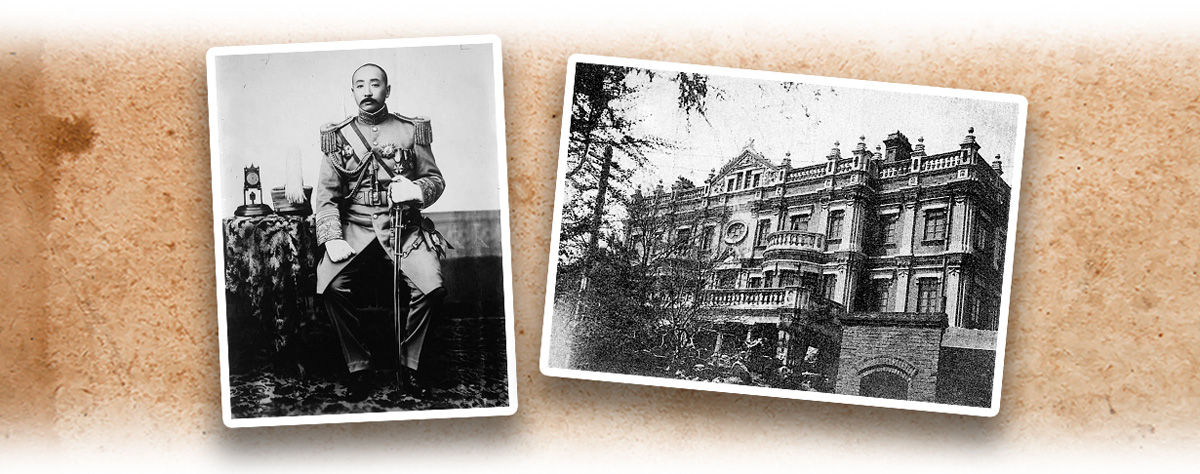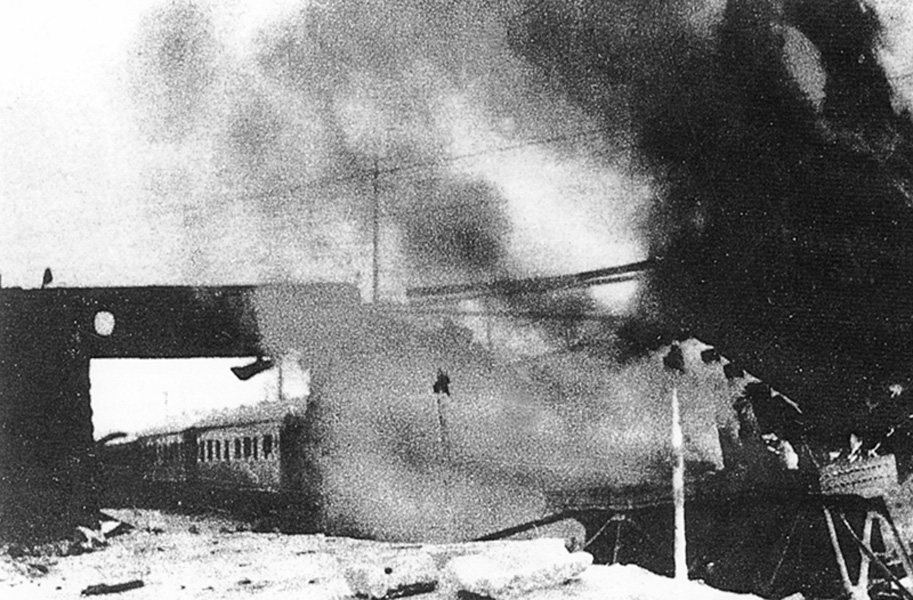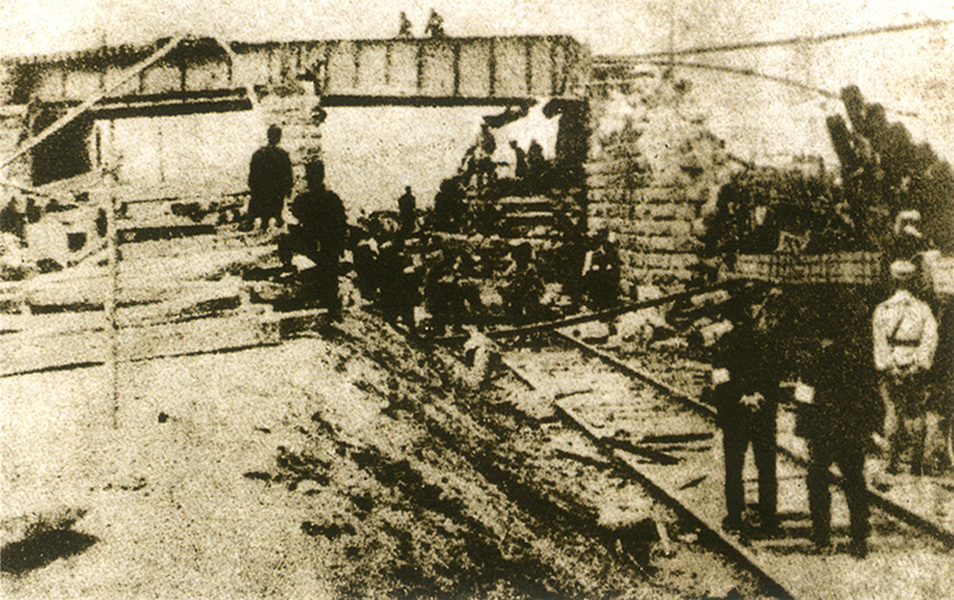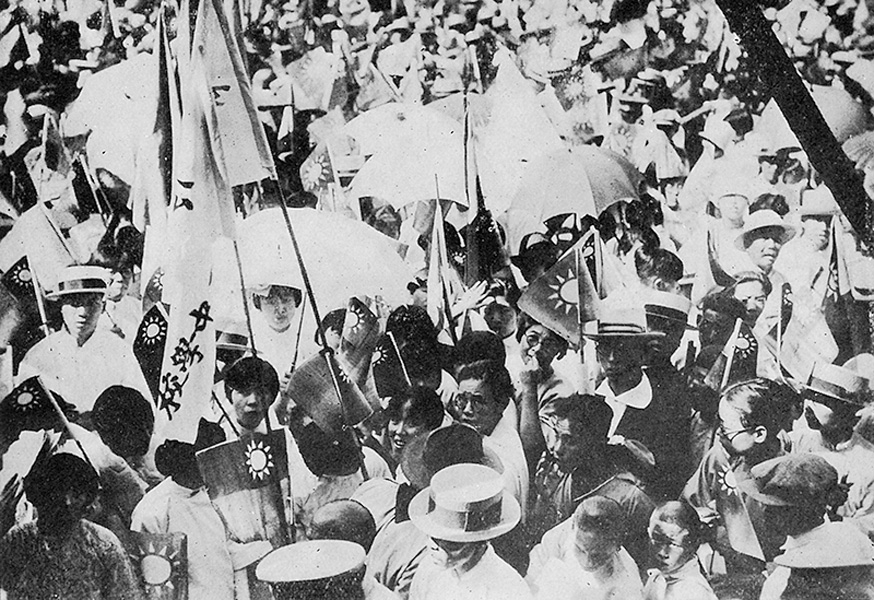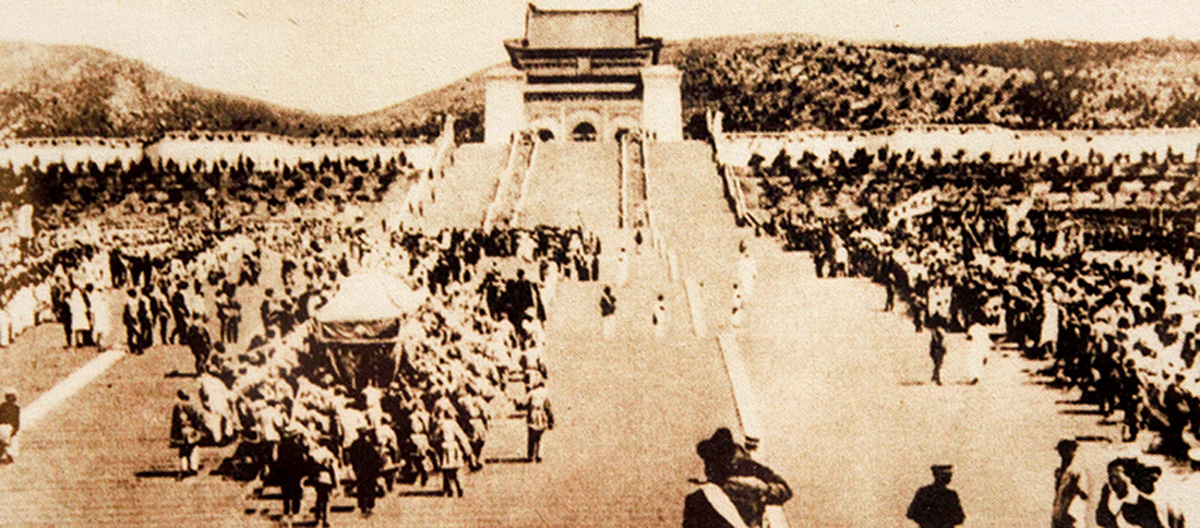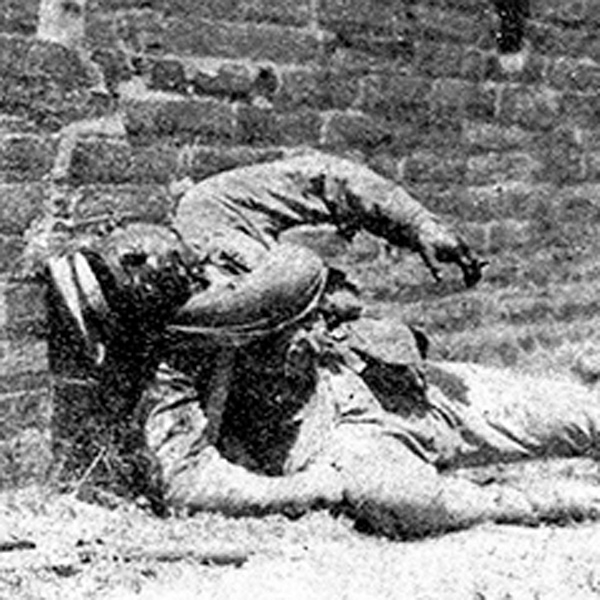Following the “Party Purge” and the Nanjing-Wuhan Split (寧漢分裂) in 1927, the Northern Expedition was suspended. After the Nanjing-Wuhan Reconciliation (寧漢復合), the Nanjing (南京) Nationalist Government prepared to resume the Northern Expedition and continue to advance northward. At this time, the National Revolutionary Army (NRA) was joined by warlord Feng Yuxiang (馮玉祥) who dominated northwest China, and the Shanxi (山西) warlord Yan Xishan (閻錫山). In February 1928, Chiang Kai-shek (蔣介石) organised the NRA into four major army groups and with himself as commander-in-chief of the First Army Group. Feng, Yan, and Li Zongren (李宗仁) were appointed commander-in-chief of the Second, Third, and Fourth Army Group respectively. Chiang also held the post of commander-in-chief of the whole army, with a total force of more than 700,000. At that time, the Fengtian clique (奉系) warlord Zhang Zuolin (張作霖), with a force of about 400,000, continued to resist.
On 7 April 1928, Chiang issued a general offensive order and various battles were launched simultaneously. On 1 May, Ji’nan was conquered. However, due to the obstruction of Japan, Chiang’s troops had to make a detour. The troops successively recovered Handan (邯鄲), Shijiazhuang (石家莊), Baoding (保定), Zhangjiakou (張家口), and other places. Zhang was defeated and withdrew from Beijing (北京) on 3 June. However, he encountered a bomb blast near Huanggutun Railway Station (皇姑屯車站) on his way to Shenyang (瀋陽) the next day and died of serious injuries. On 8 and 12 June, the NRA took control of Beijing and Tianjin (天津) successively. On 15 June, the Nanjing Nationalist Government announced that “reunification was accomplished” and that Beijing was renamed Beiping (北平).
On 29 December 1928, Zhang Xueliang (張學良), who inherited his deceased father Zhang Zuolin’s mantle, announced via telegram to the whole country that the provinces of Fengtian (奉天), Jilin (吉林), Heilongjiang (黑龍江), and Rehe (熱河) changed from the five-coloured flag to the “Blue Sky, White Sun, and a Wholly Red Earth” flag. It was the flag of the Republic of China, expressing Zhang’s obedience to the leadership of the Nanjing Nationalist Government. The event was historically known as the Northeast Flag Replacement. This also meant that China was generally reunified and the Nationalist Government became the only regime representing China internationally.
|
|
Despite the Northeast Flag Replacement at the end of 1928, the Chinese Communist Party’s struggle against Chiang Kai-shek was still going on. Was it valid to announce that the Northern Expedition was largely completed and that the whole country was basically reunified? |
|
|
See answer below. |
In 1928, the Northern Expedition resumed. The NRA advanced in multiple routes.
The Fengtian clique warlord Zhang Zuolin and his residence. In early 1928, the Beiyang government (北洋政府) with Beijing as its capital was controlled by Zhang. The hundreds of thousands of Fengtian troops under his command became the biggest obstacle for the NRA to reunify China. In April and May 1928, the NRA repeatedly defeated the Fengtian troops and besieged Beijing and Tianjin by the end of May.
After the defeat, Zhang Zuolin decided to withdraw from Beijing and retreat outside the Shanhai Pass (山海關). On the evening of 4 June 1928, the embedded bomb detonated when Zhang’s train passed the Sandong Bridge (三洞橋) near Huanggutun.
The mess at the Sandong Bridge near Huanggutun after the bomb blast.
Zhang Zuolin’s train was severely damaged in the bomb blast. The seriously injured Zhang was still alive when he was rescued but died soon after. It is generally believed that the incident was committed by Japan to hinder China’s reunification.
Students in Beijing welcoming the NRA’s arrival. The Huanggutun Incident shocked the whole country and the world, but the Northern Expedition was unaffected. On 8 June 1928, the NRA took over Beijing. Later, the Nationalist Government renamed it Beiping.
On 12 June 1928, the NRA took over Tianjin. The picture shows the NRA at Tianjin Railway Station.
In July 1928, after the NRA recovered Beijing and Tianjin, a group of military officers offered sacrifices to Sun Yat-sen (孫中山). From the left in the front row: Yan Xishan, commander-in-chief of the Third Army Group, Feng Yuxiang, commander-in-chief of the Second Army Group, Chiang Kai-shek, commander-in-chief of the NRA and the First Army Group, and Li Zongren, commander-in-chief of the Fourth Army Group.
Zhang Xueliang inspected the troops on horseback. After Zhang Zuolin’s death, his son Zhang Xueliang inherited his mantle in Northeast China. On 29 December 1928, Zhang Xueliang declared his obedience to the leadership of the Nanjing Nationalist Government and changed the five-coloured flag to the “Blue Sky, White Sun, and a Wholly Red Earth” flag. This historically known as the Northeast Flag Replacement, marking the success of the Northern Expedition and the general reunification of China. After this, the Nanjing Nationalist Government became the only central government representing China.
On 1 June 1929, the Nationalist Government held a great Interment Ceremony for Sun Yat-sen at Dr Sun Yat-sen’s Mausoleum in Nanjing. Sun’s coffin was temporarily placed in the Temple of Azure Clouds (碧雲寺), Beijing, when he passed away in 1925. After the Northern Expedition, the Nationalist Government transported his coffin to Nanjing for reburial.
|
|
Despite the Northeast Flag Replacement at the end of 1928, the Chinese Communist Party’s struggle against Chiang Kai-shek was still going on. Was it valid to announce that the Northern Expedition was largely completed and that the whole country was basically reunified? |
|
|
With the recovery of Beijing and the Northeast Flag Replacement, the Nanjing Nationalist Government generally achieved national reunification. Despite some resistance, the main objectives and tasks of the Northern Expedition in 1926-28 were basically accomplished. From the history of many dynasties, it takes time from the regime establishment to the national reunification. For example, the Western Han dynasty (西漢) is often stated to start from 206 BC, but it was not until 202 BC that it won the Chu-Han Contention (楚漢戰爭); the Eastern Han dynasty (東漢) was established in 25 AD, but it was not until 37 AD that it pacified all rebels; the Tang dynasty (唐朝) was established in 618 AD, but it was not until 628 AD that it quelled the disturbances; the Ming dynasty (明朝) was established and completed its northern expedition in 1368, but it was not until 1389 that it was completely reunified. |
Sources of most photos used in this feature piece: Fotoe (pictures 1-3, 5-10), Visual China Group (picture 4).






